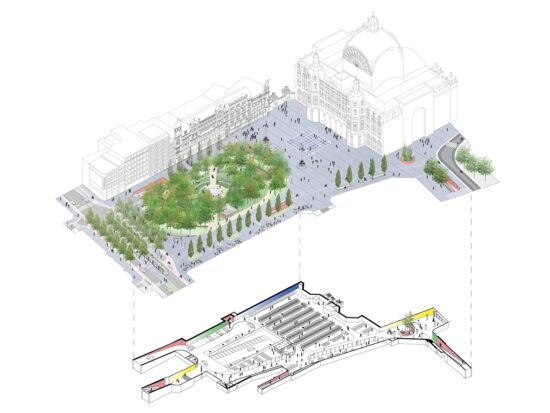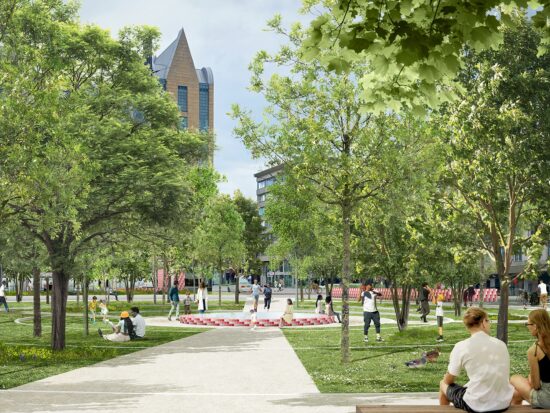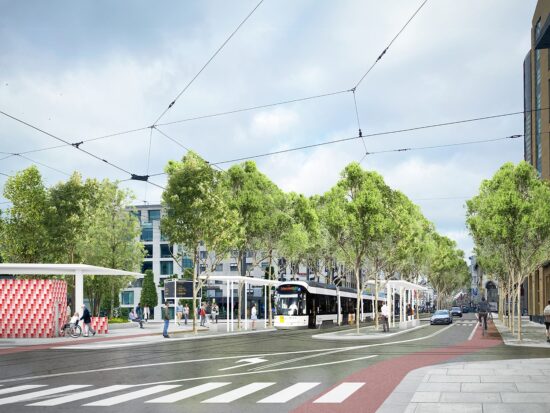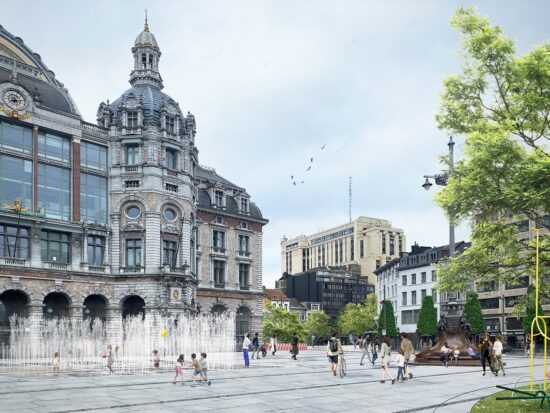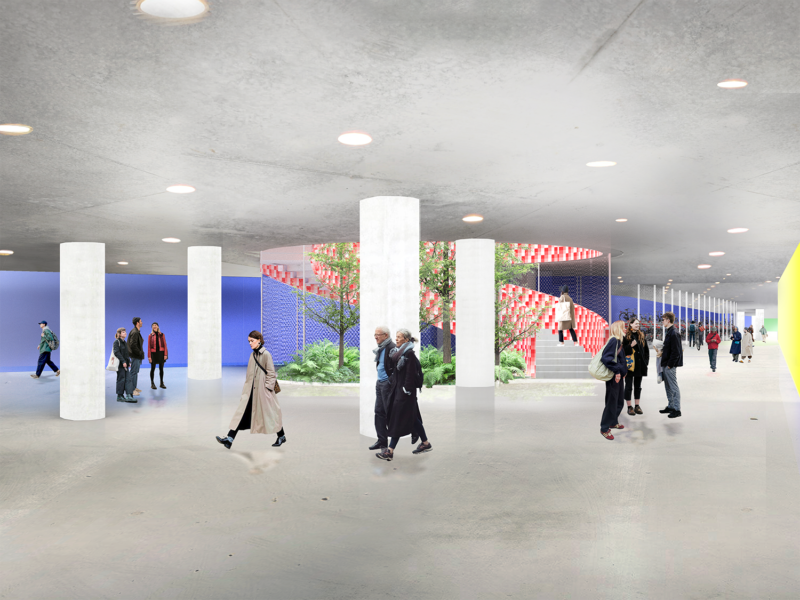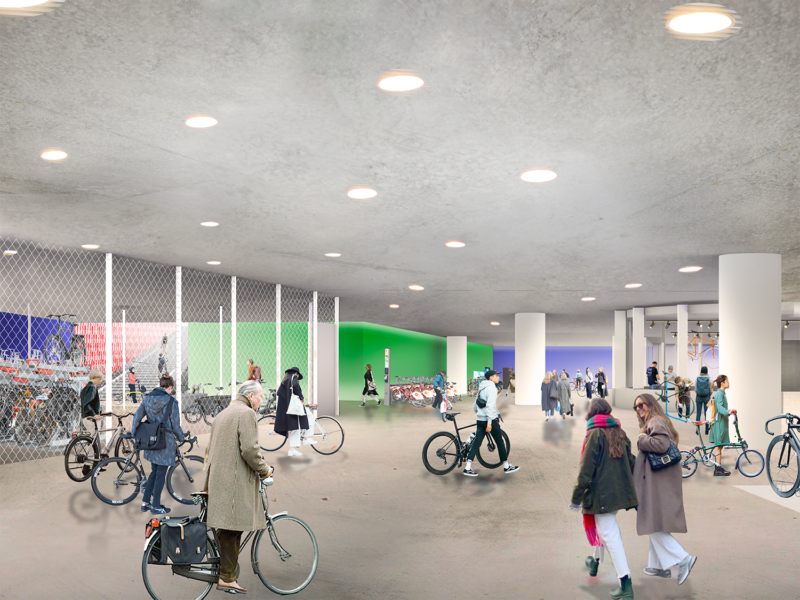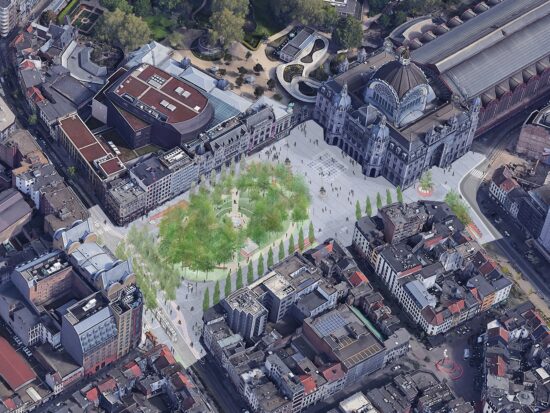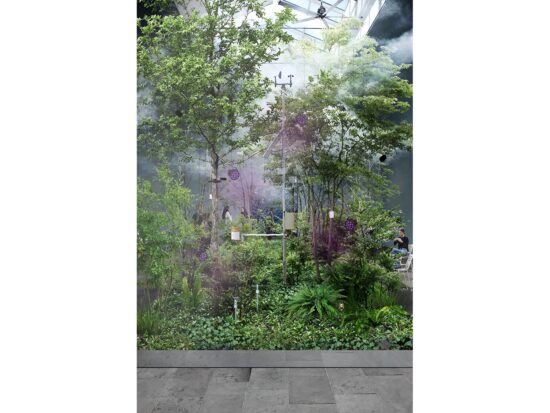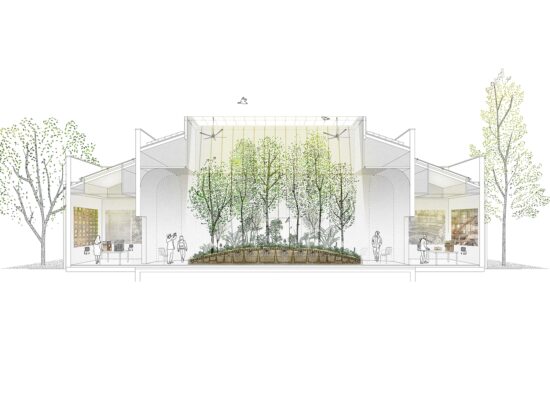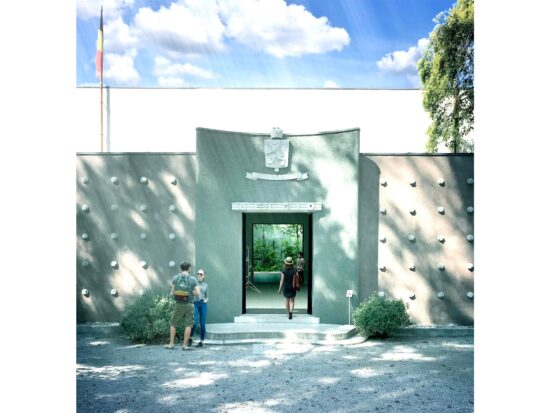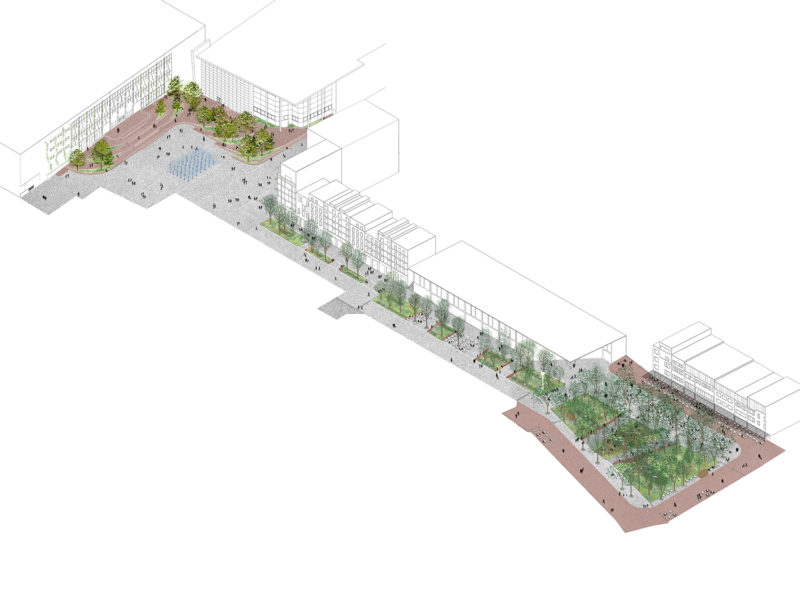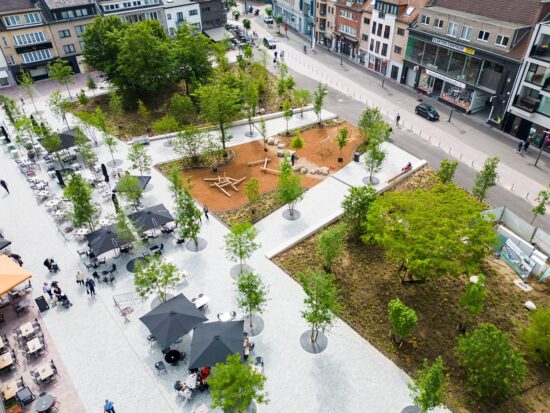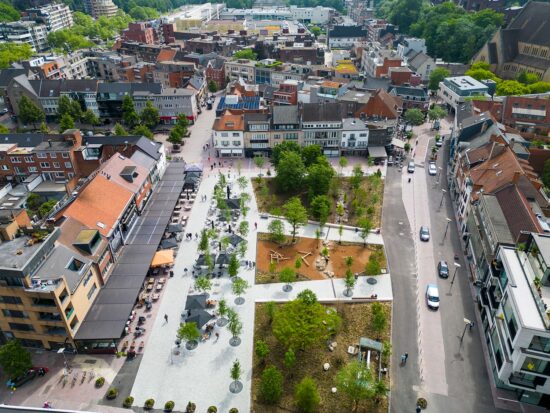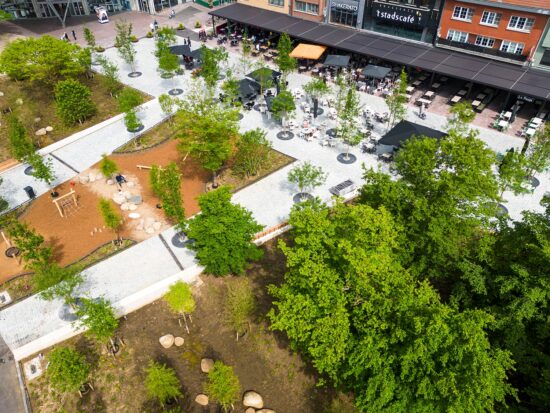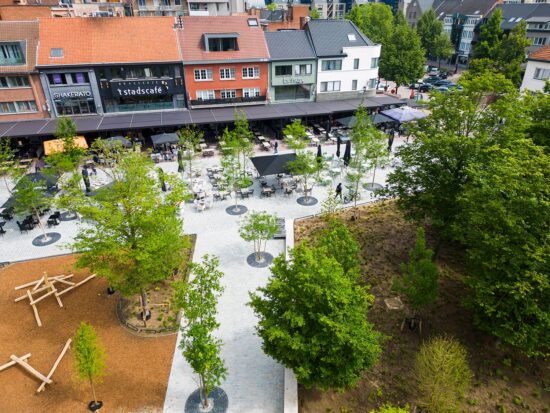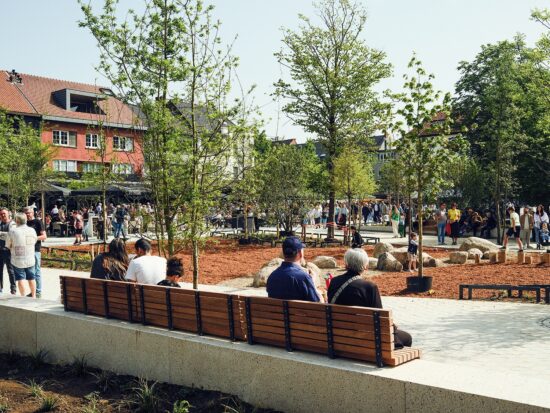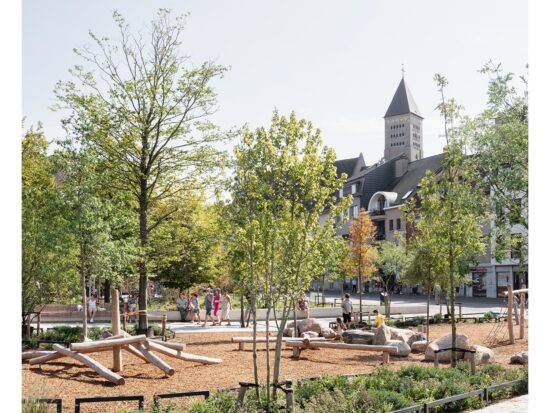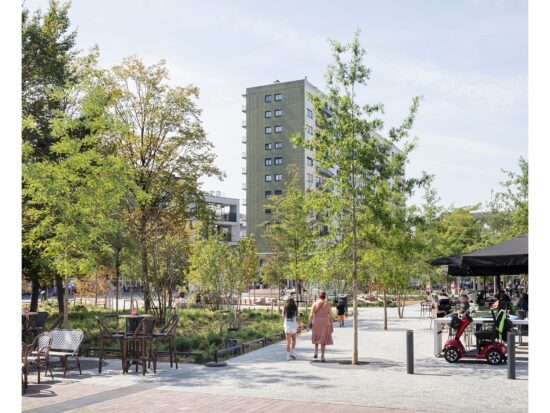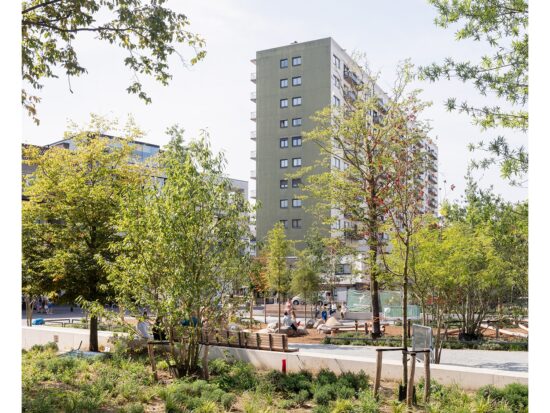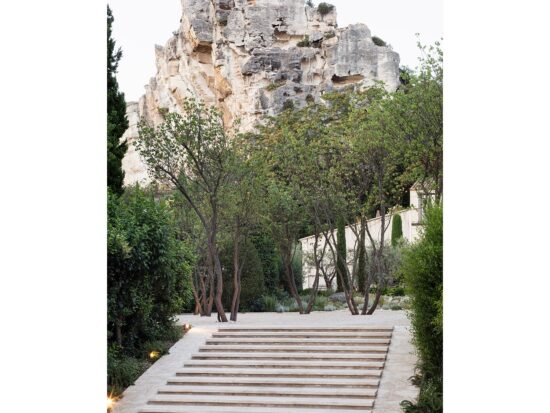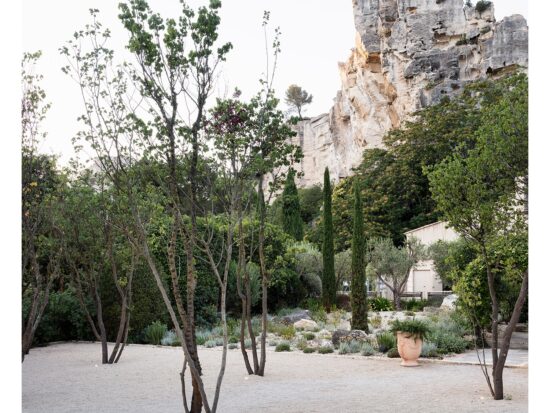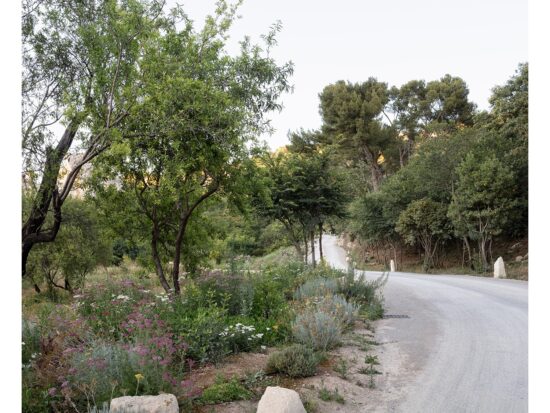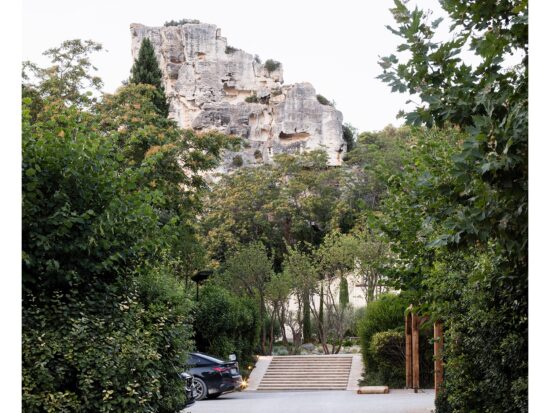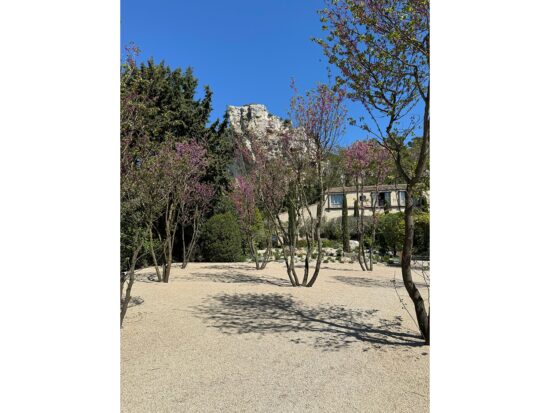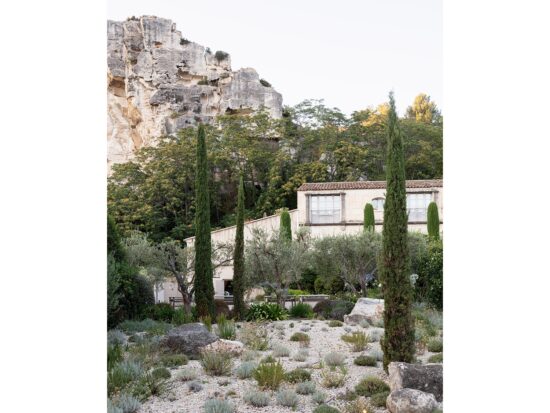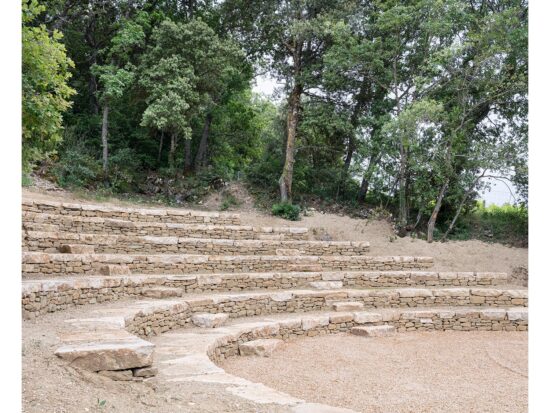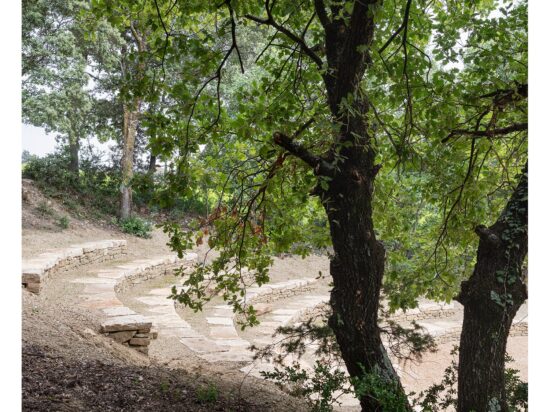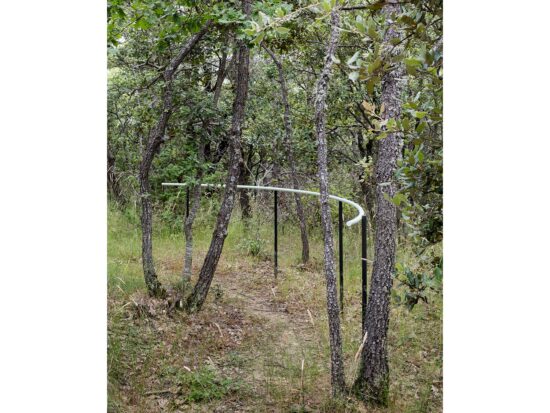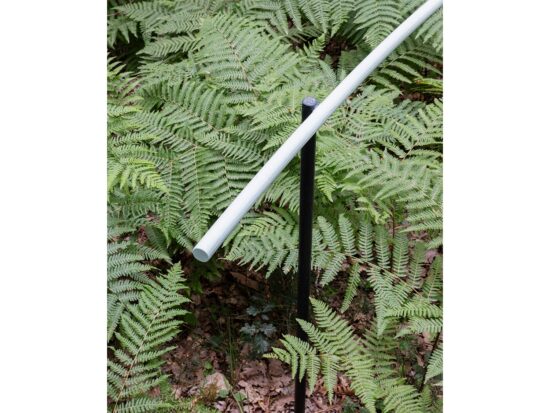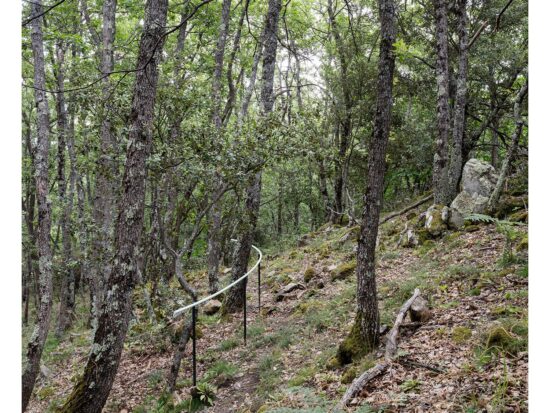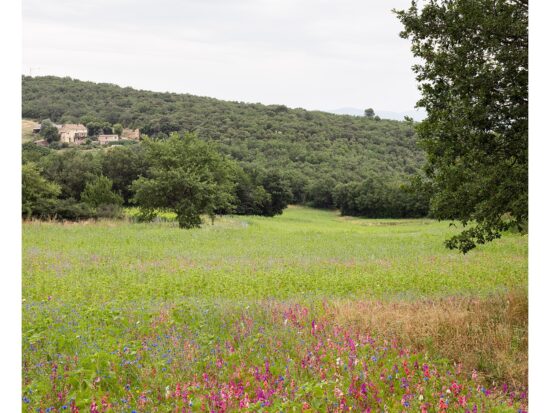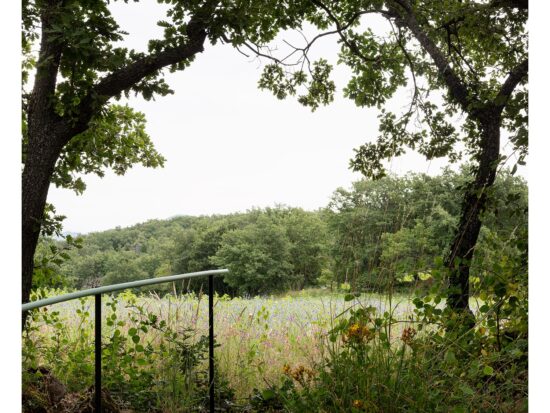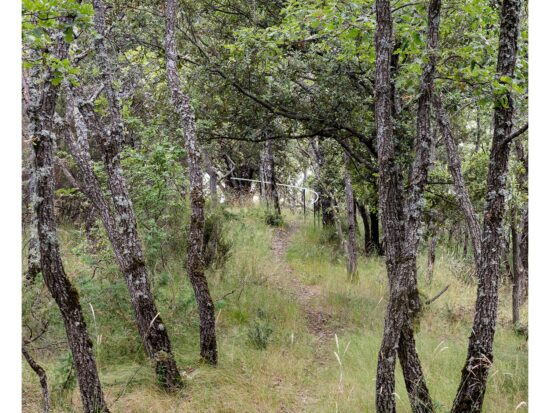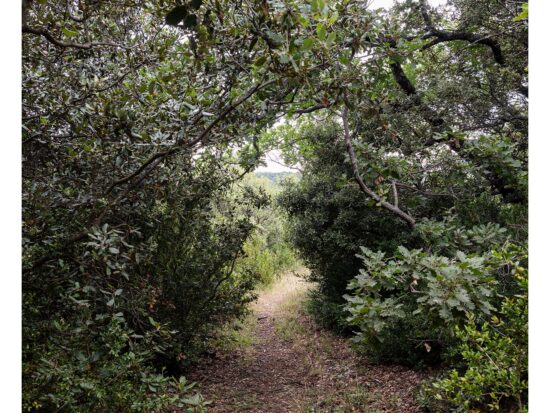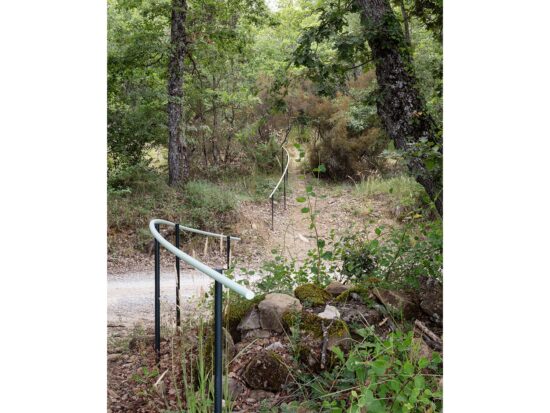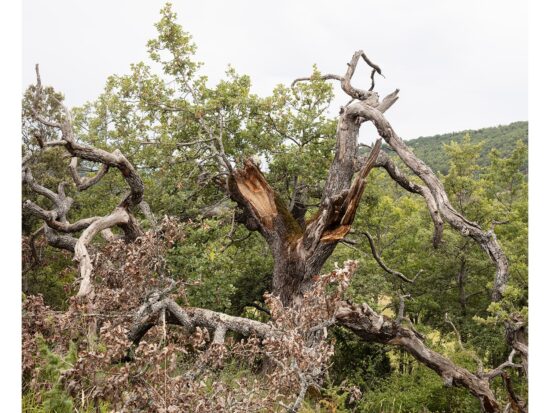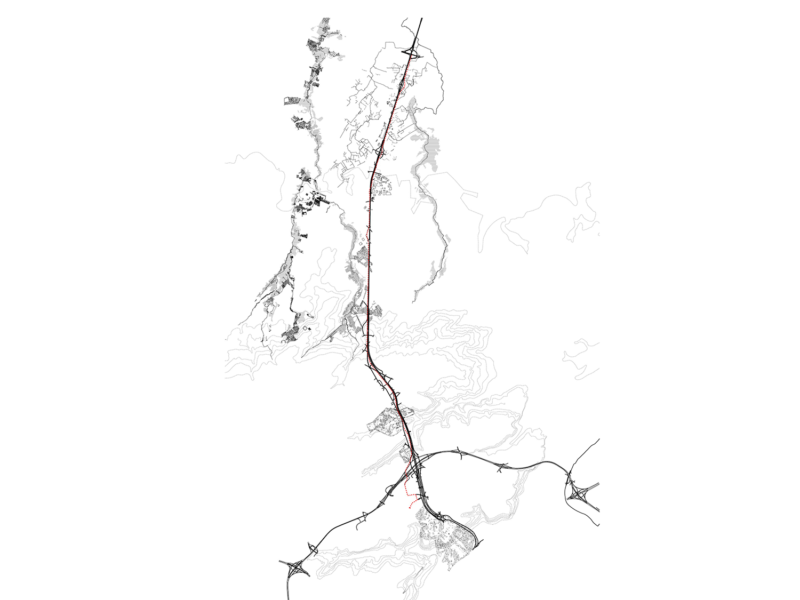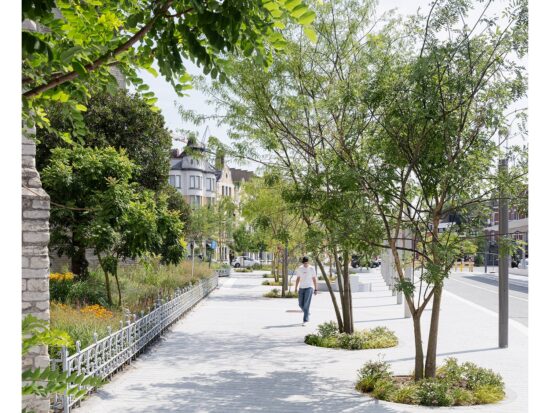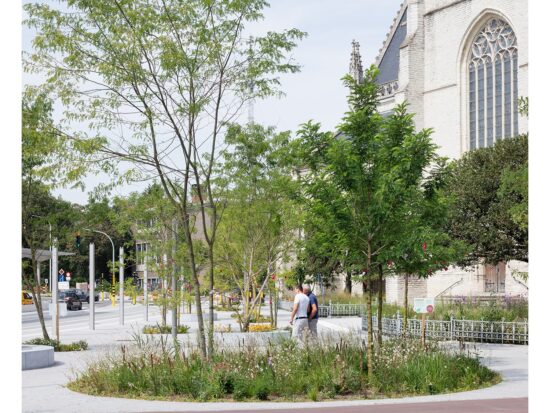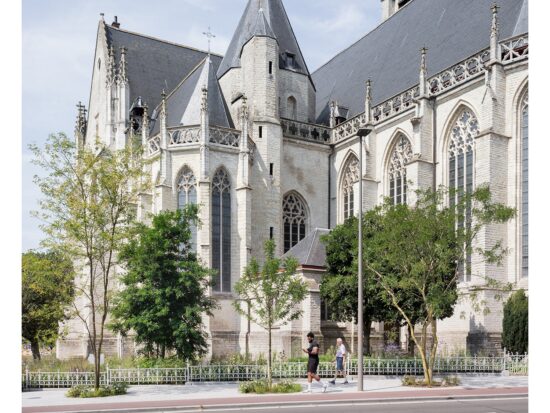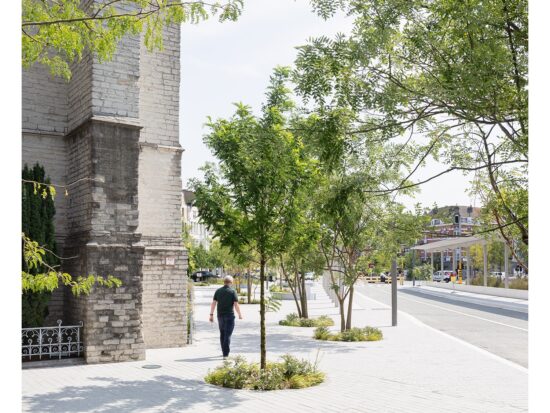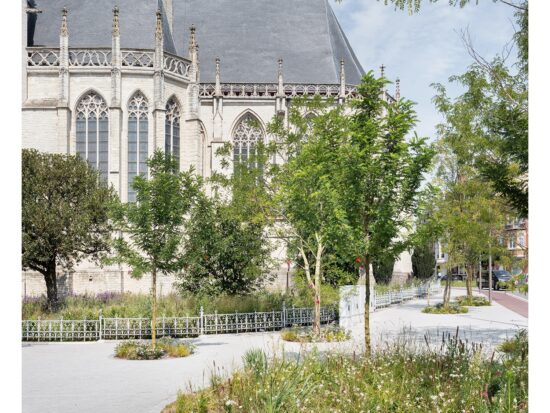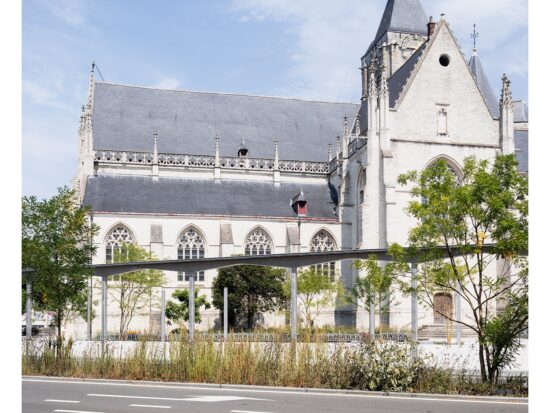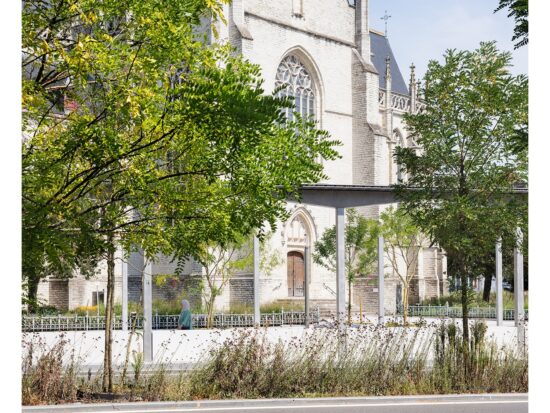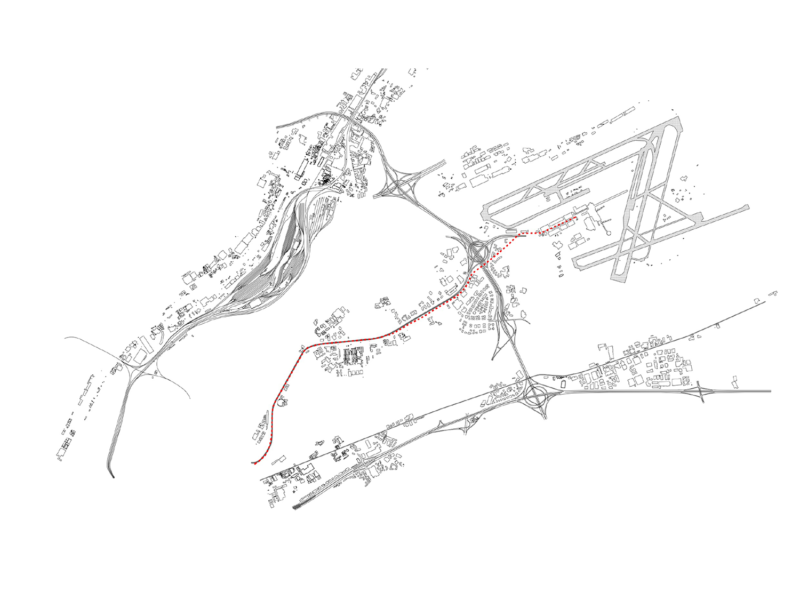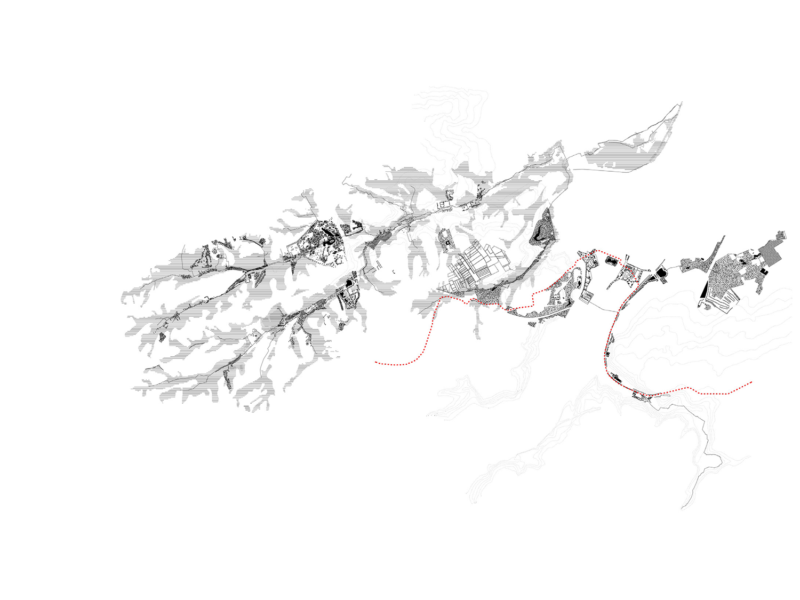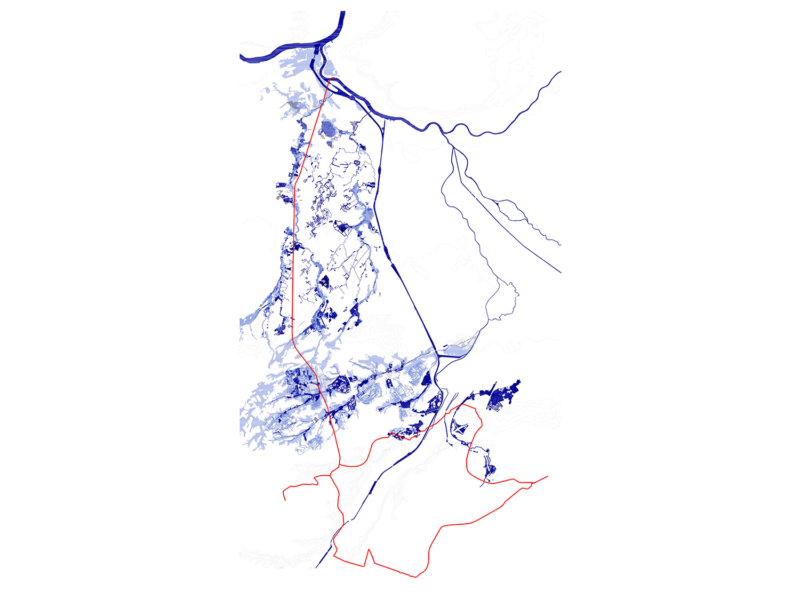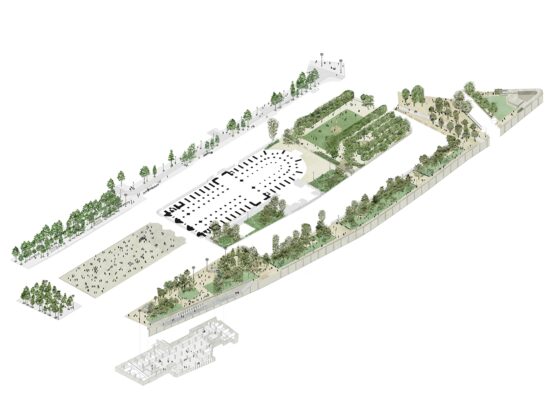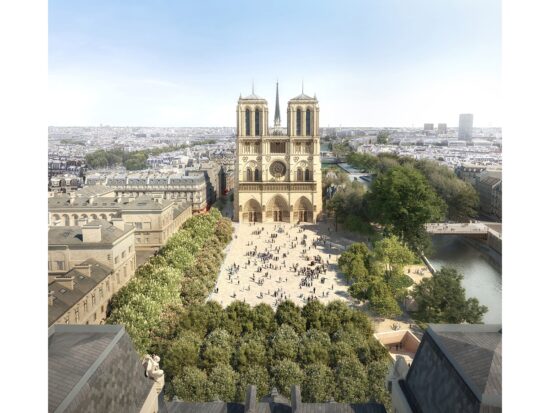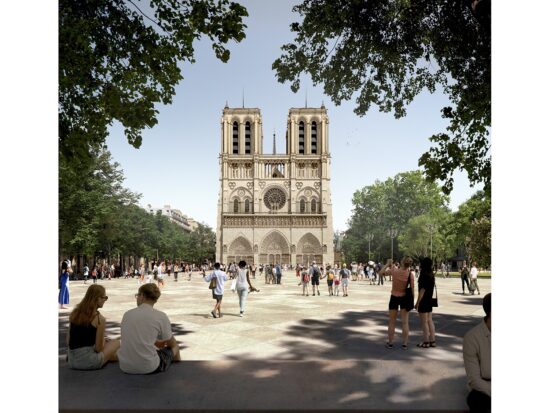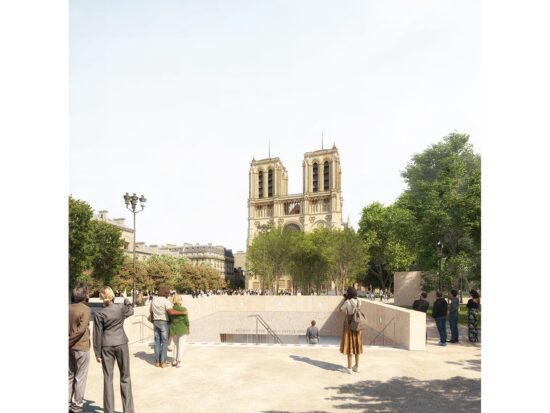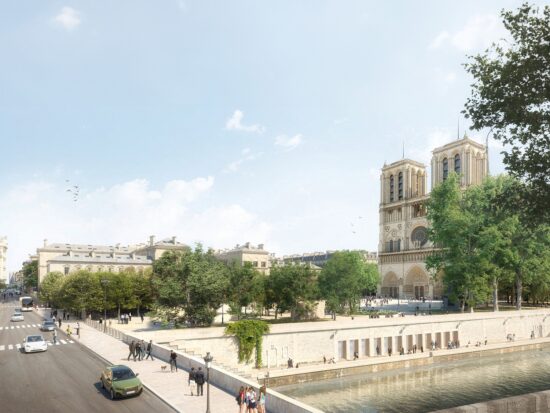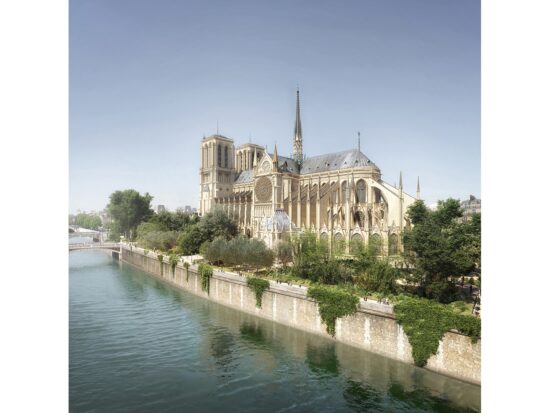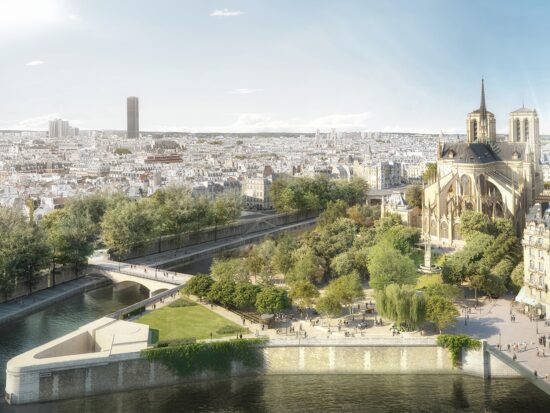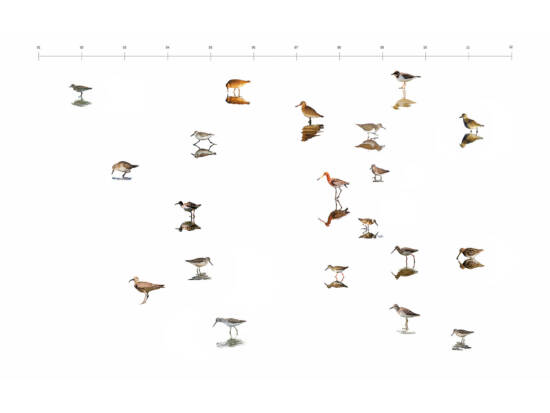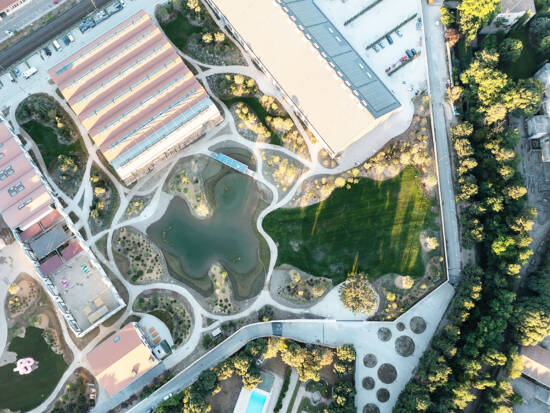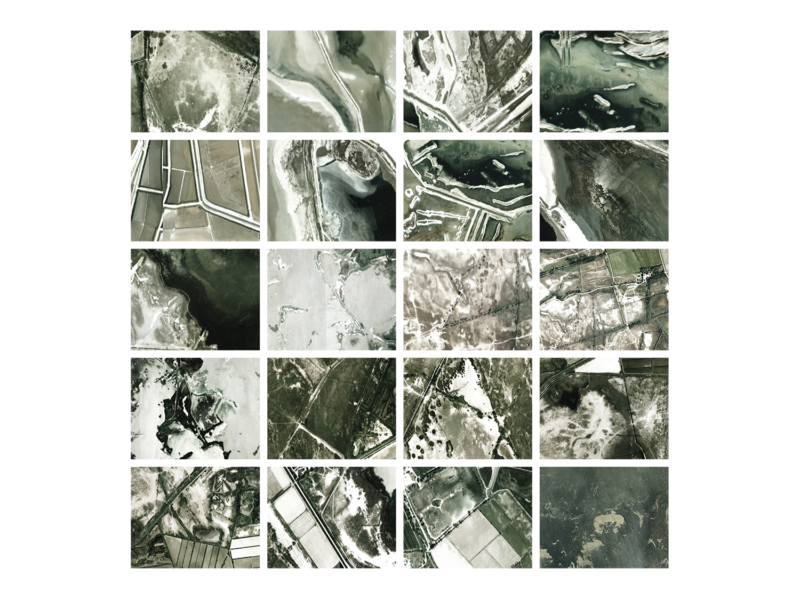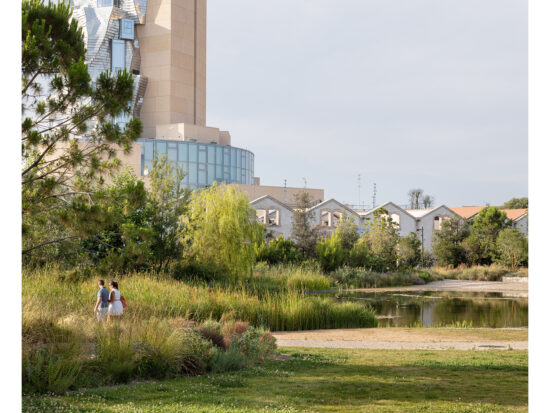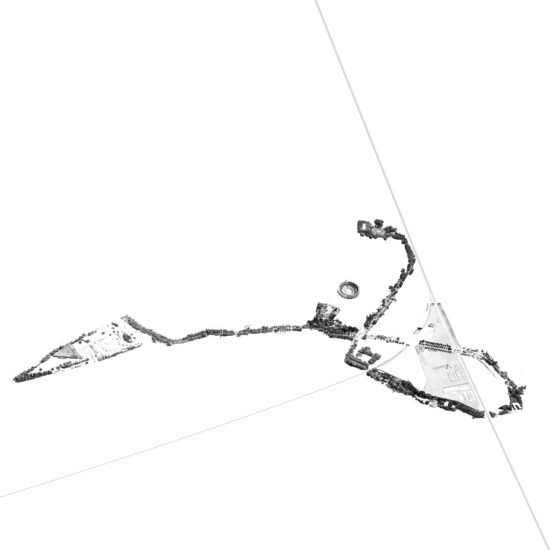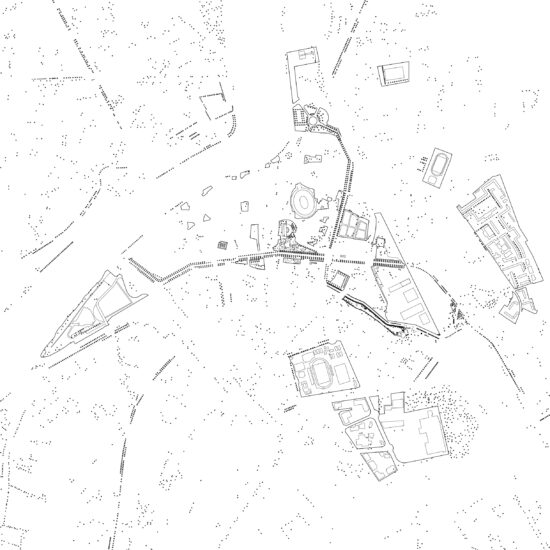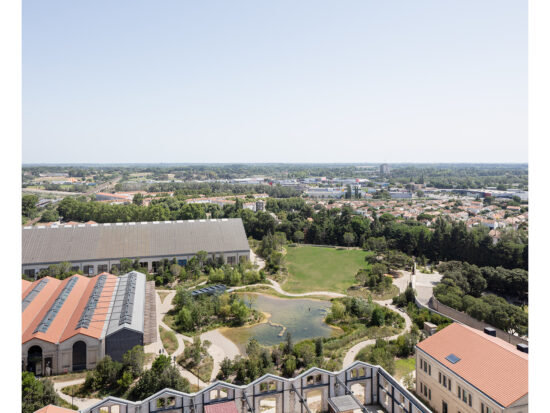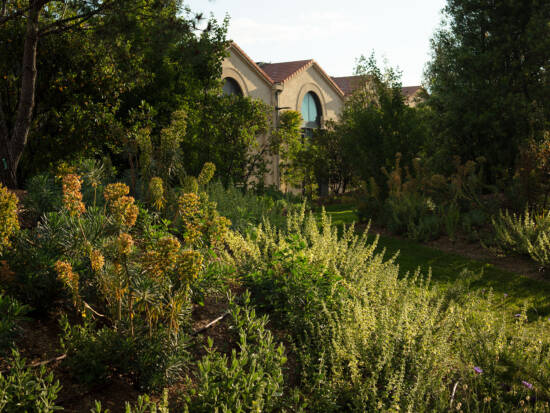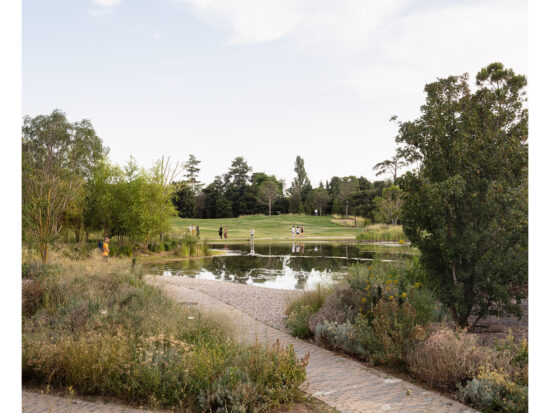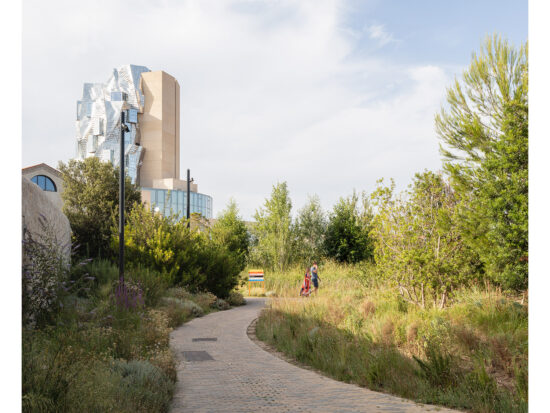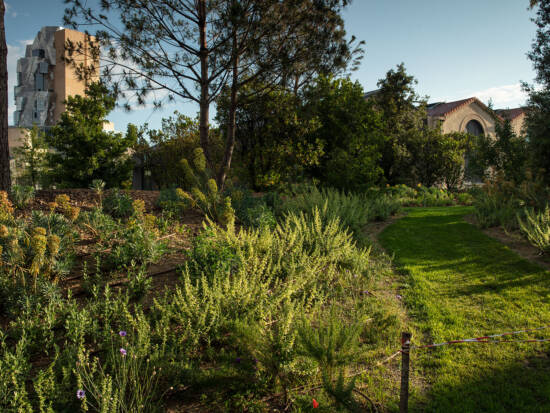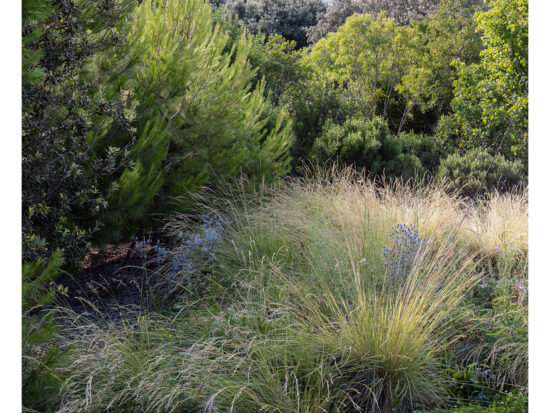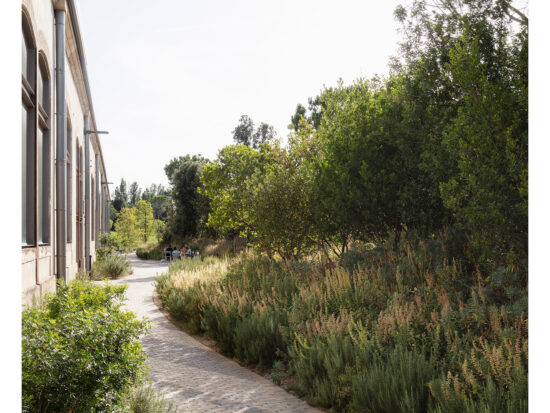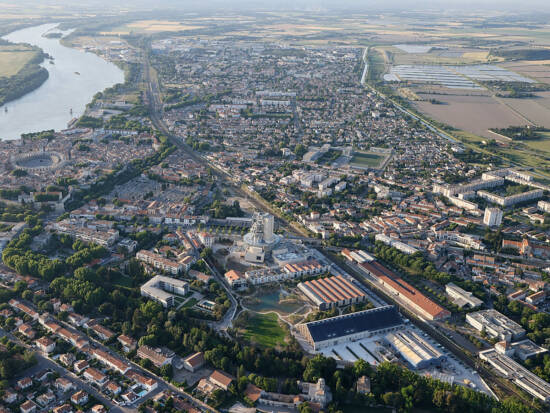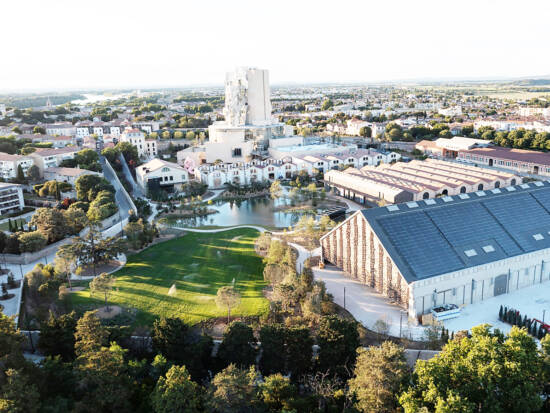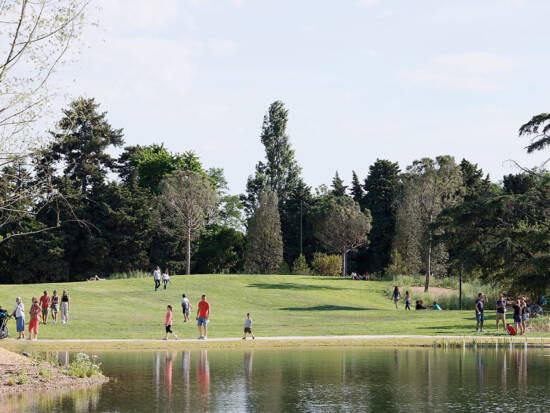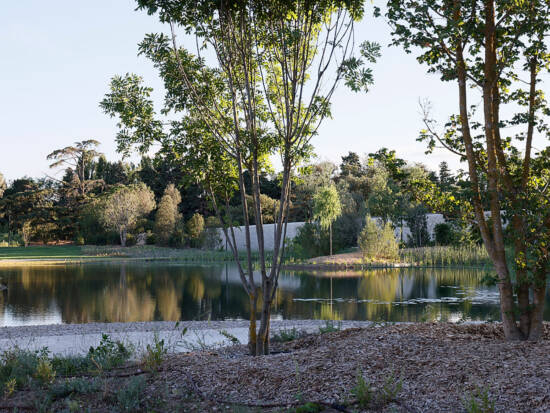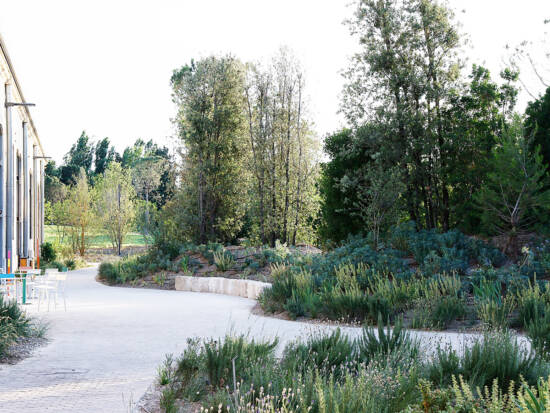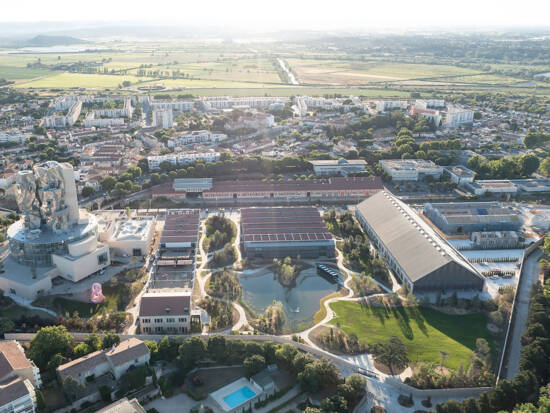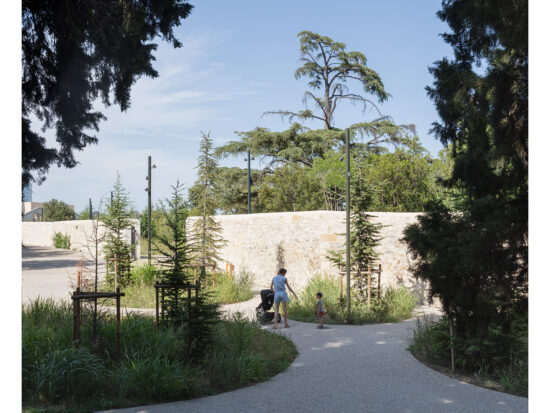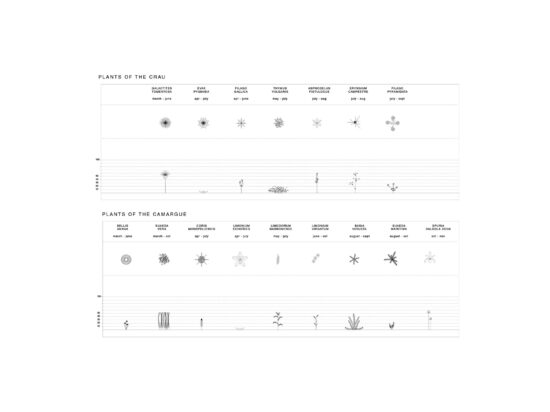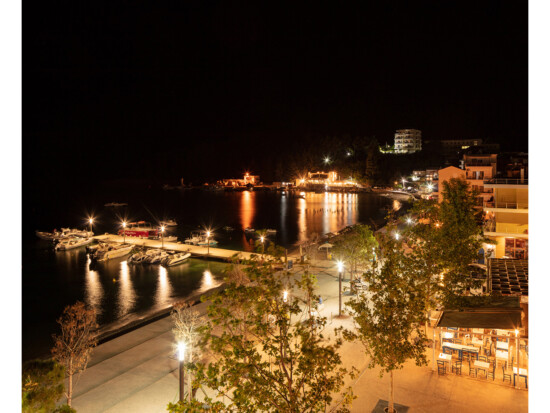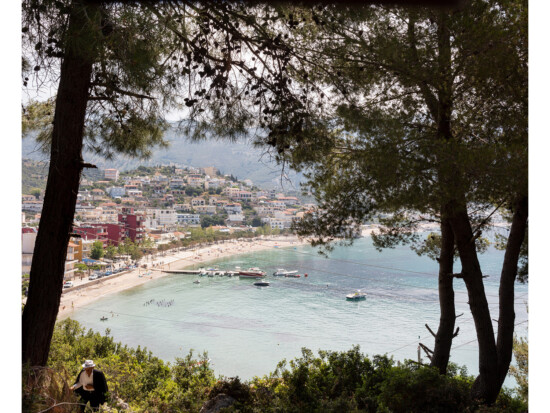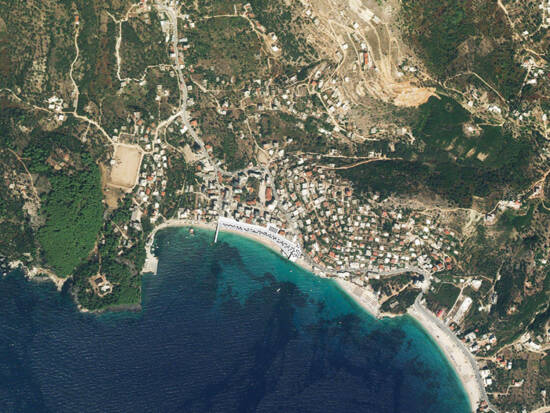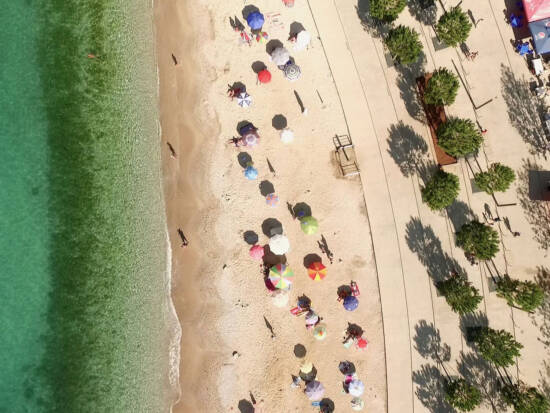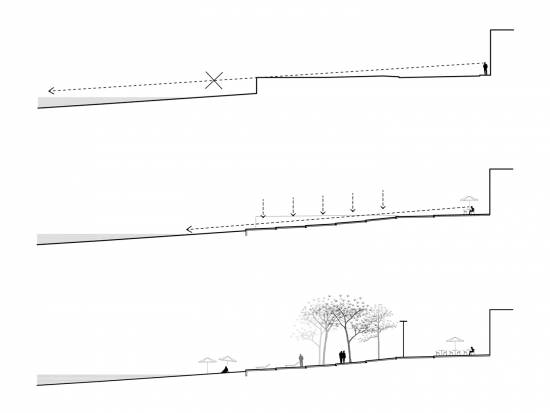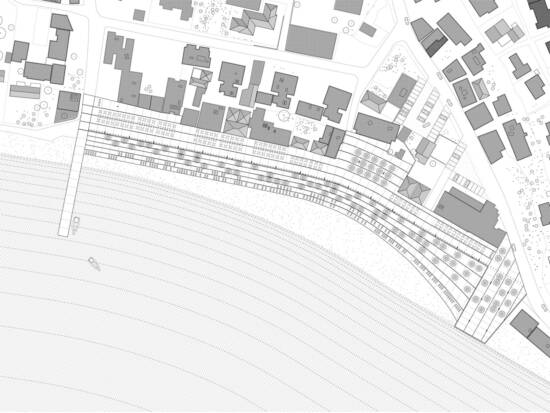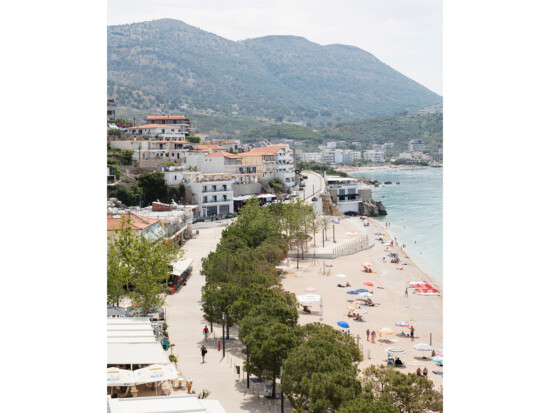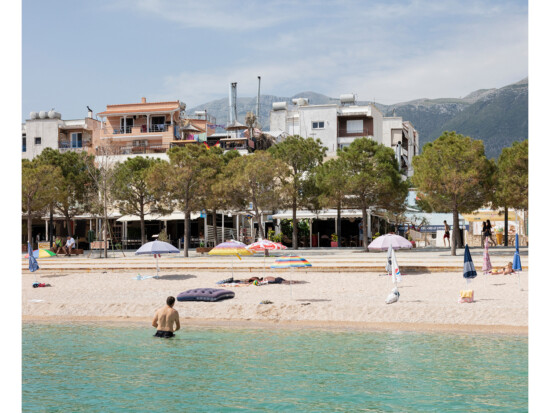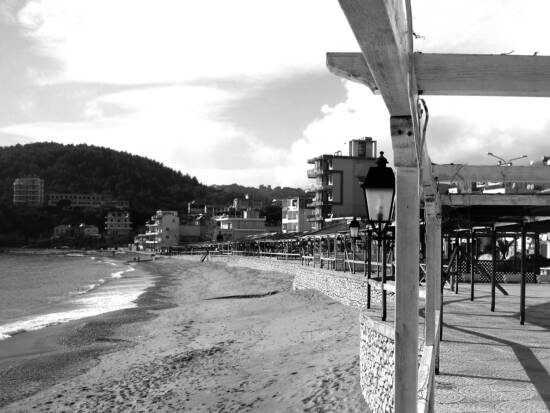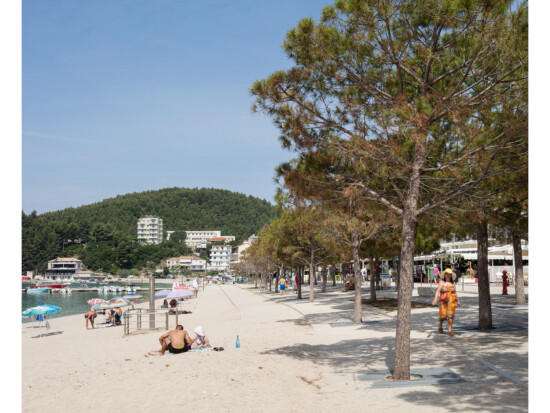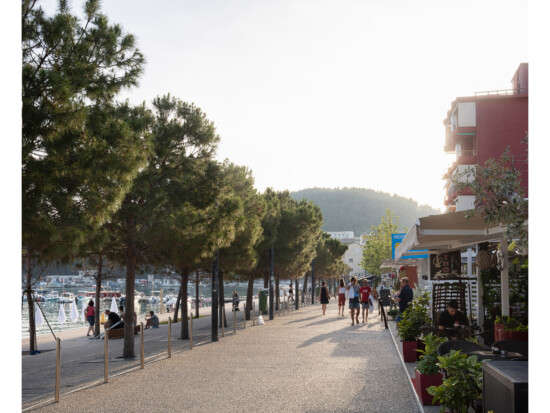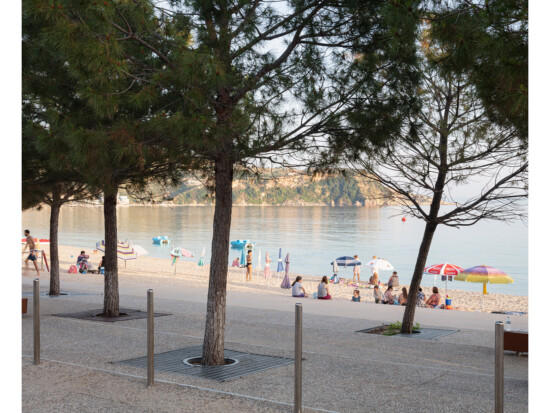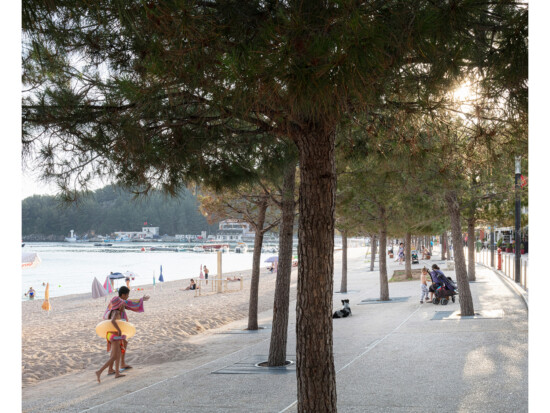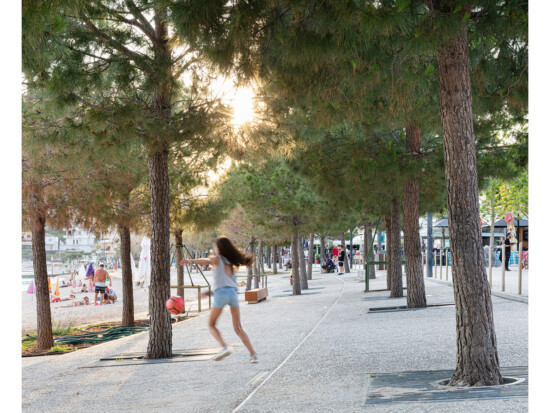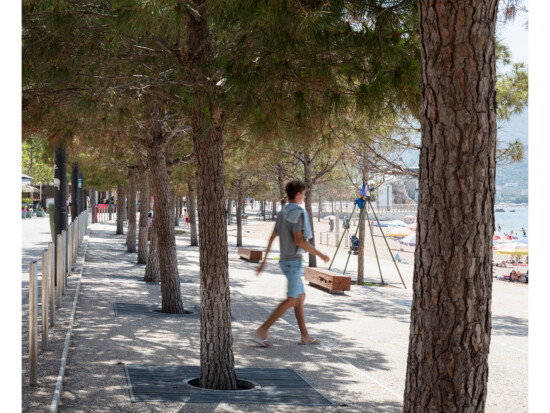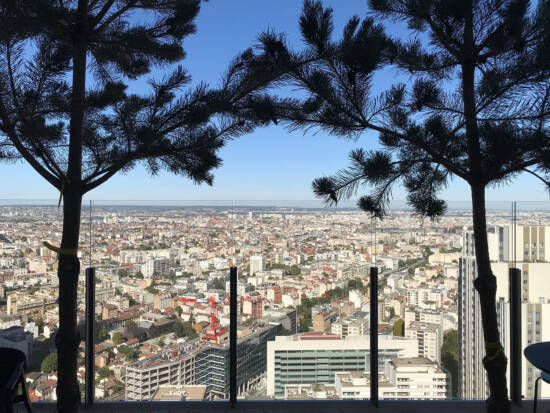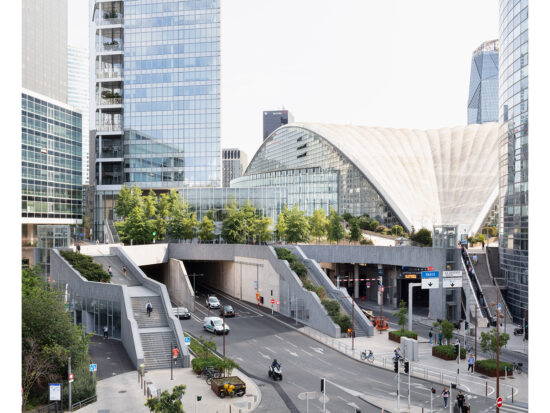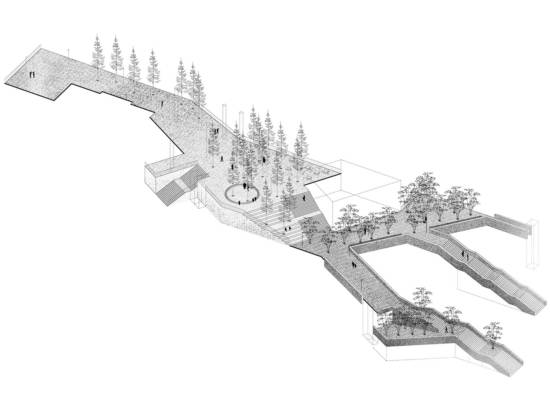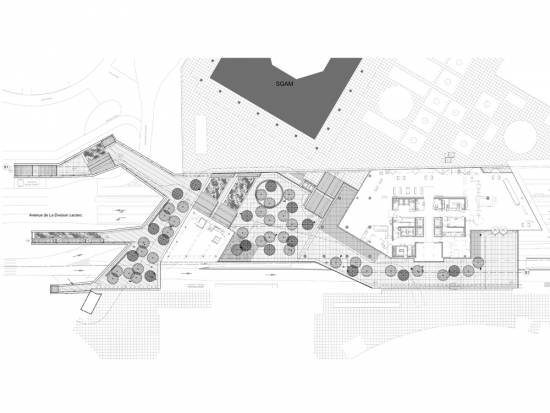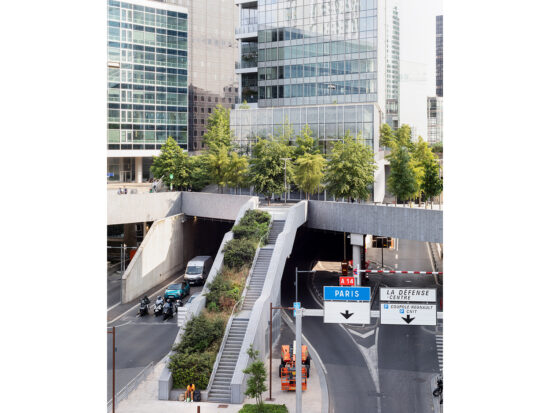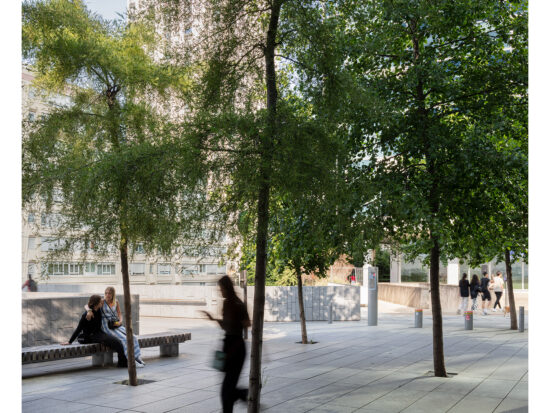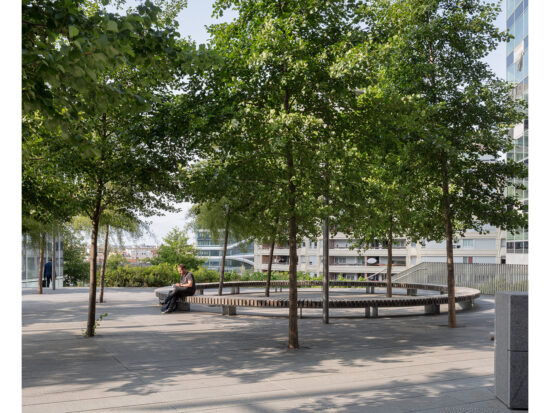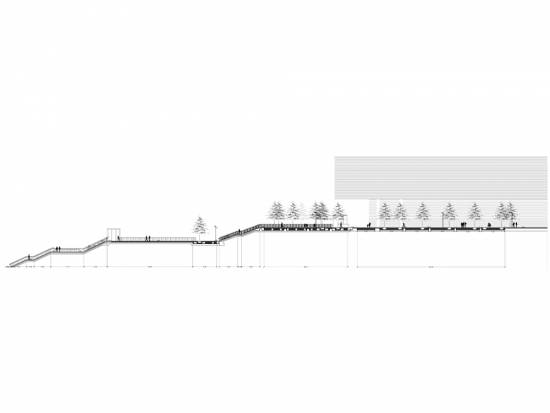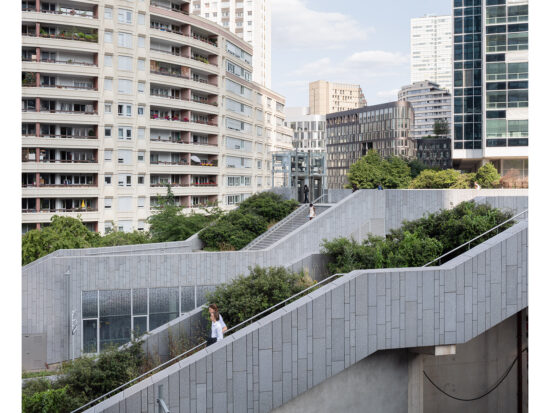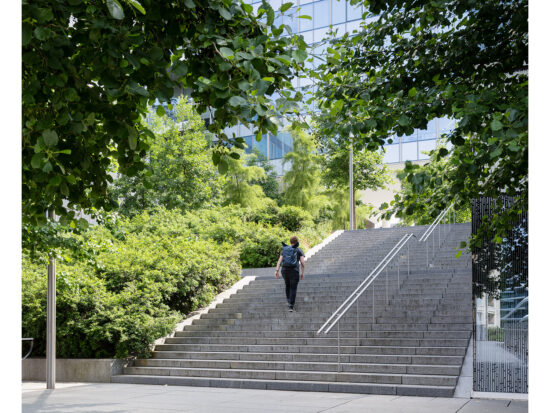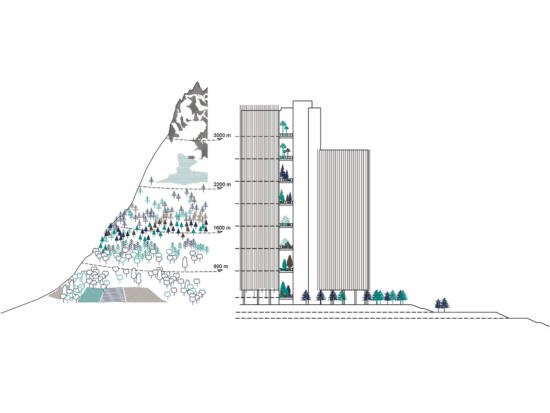Antwerp, Belgium
Located next to Antwerp’s emblematic central station, Astridplein is both the entrance to the city and a complex intersection of mobility. By compacting the chaotic traffic flows, the project creates space for a central park zone: integrating shaded areas and water features. It transforms the square into a comfortable, multifunctional space for commuters, tourists and locals.

Year: 2024-2029
Client: City of Antwerp
Design Team: Bureau Bas Smets – Origin – TPF Engineering
In collaboration with: Erik De Waele, Common Ground, Hydroscan, Radiance35, Pieter Vermeersch, Vectris, Widnell Europe
Venice, Italy
Bureau Bas Smets’ project “Building Biospheres” has been selected for the Belgian Pavilion at the Venice Architecture Biennial 2025. Based on a decade-long conversation between Bas Smets and neurobiologist Stefano Mancuso, this exhibition examines how a better understanding of the natural intelligence of plants can create a new relationship between nature and architecture. The pavilion serves as a prototype where plants create a microclimate by activating rain, wind, and light.

Year: 2024-2025
Commissioned by: Flanders Architecture Institute
Design Team: Bureau Bas Smets – Stefano Mancuso
In collaboration with: Erik De Waele, Lisa De Visscher, Veronique Patteeuw, Kathy Steppe, Dirk De Pauw
Genk, Belgium
The reconversion of Genk’s former ‘grand place’ into a ‘green place’ replaces 30% of the hardscape with an urban forest. Although surrounded by lush landscapes, the city center had become a concrete desert, creating a heat island during the summer. Now, surrounding terraces are planted with trees, providing 40% canopy cover. In the heart of this urban forest, a playground for children is flanked by two generous benches. The center has once again become a place where people gather.

Year: 2021 – 2026
Client: City of Genk
Design Team: Bureau Bas Smets
In collaboration with: Gijs Van Vaerenbergh, Atelier Ruimtelijk Advies
Photographs (1, 2, 3, 4, 5): Stad Genk
Photographs (6, 7, 8): Michiel De Cleene
Baux-de-Provence, France
The gardens of the Baumanière domain in the South of France, renowned for its 3-star Michelin restaurant, were refurbished to create a sequence of atmospheres that accompany visitors from their car to their table. A new scenic road highlights the beautiful rocky Alpilles landscape upon arrival. A large limestone staircase leads to a central plaza where Judas trees provide shade. A pergola tunnel with jasmine climbers leads the visitor along a garden filled with the fragrances of Provence towards the restaurant.

Year: 2022
Client: Private
Landscape Architect: Bureau Bas Smets
Photographs (1, 2 ,3 ,5 , 6) : Michiel De Cleene
Viens, France
In the heart of the French Luberon lies the beautiful domain of Les Davids. A promenade passes through a woodland, across a valley, and over a plateau, allowing visitors to discover sculptural trees and hidden sources along the way. An elegant railing, painted in the same fluorescent green as the abundant lichen, gently shows the way. An amphitheater was built against a natural hillside, using only local stones dug out from the surrounding agricultural fields.

Year: 2021-2024
Client: Private
Landscape Architect: Bureau Bas Smets
Photographs: Michiel De Cleene
Vilvoorde, Belgium
The transformation of Vilvoorde’s Heldenplein transforms a congested, double roundabout and parking area into a ‘Green Gate’ into the city. Large sidewalks provide seating areas around newly planted trees. Below the pavement, a continuous structural soil allows roots to grow freely. Over time, their large canopies will produce a cooling microclimate. This project is part of the ‘Ringtrambus’ infrastructure, offering a dedicated 30km bus lane in the northern region of Brussels.
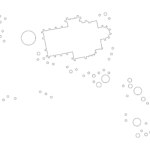
Year: 2016 – ongoing
Client: De Werkvennootschap
Design Team: Tractebel – Ney & Partners – Bureau Bas Smets
Photographs: Michiel De Cleene
Paris, France
The project rethinks the emblematic public spaces around Notre-Dame as a sequence of climatic atmospheres. Compressed and imbricated around the Cathedral, these spaces frame new views towards Notre-Dame, establish a new relationship with the Seine and offer multiple activities in the centre of Paris.
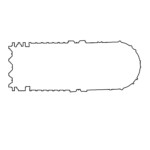
Year: 2021 – 2027
Client: Ville de Paris
Design Team: Bureau Bas Smets
In collaboration with: GRAU, Neufville-Gayet Architectes, Ingérop, Franck Boutté Consultants, Les Eclaireurs, BLD Waterdesign, Cronos Conseil
Images (1, 2, 3, 4, 5, 6): Studio Alma
Arles, France
The semi-desert climate of the former industrial railway yard is transformed into a Mediterranean climate by accelerating what nature would have done over time. Planted with more than eighty thousand trees, shrubs and plants the park is made with the species of the three surrounding biotopes and connects all the buildings of the new art centre of the Luma Foundation.
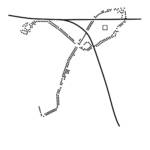
Year: 2009 – 2021
Client: SCI AAI, AREA
Landscape Architect: Bureau Bas Smets
Architect: Gehry Partners LLP, Selldorf Architects
Photographs (7, 10): Rémi Bénali
Photographs (1, 13, 14, 15, 16, 17, 18): Iwan Baan
Photographs (3, 6, 8, 9, 11, 12, 19): Michiel De Cleene
Himara, Albania
The former high seawall blocked both the view and the access towards the Mediterranean Sea in this Albanian beach town. Its replacement with several sloped terraces reconnects the town with the sea. The pine trees provide shade and create a new linear forest in front of the buildings.
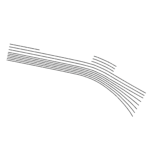
Year: 2015 – 2017
Client: Atelier Albania
Landscape Architect: Bureau Bas Smets
In collaboration with: Son-group
Photographs (1, 6, 7, 9, 10, 11, 12, 13, 14, 15): Michiel De Cleene
Courbevoie, France
The public space around a new skyscraper in the Paris La Défense business district is suspended above an urban boulevard. Alder trees are densely planted to create an urban forest. Their roots grow freely beneath a continuous granite hardscape that gives a robust identity to this plaza surrounded by glass towers.
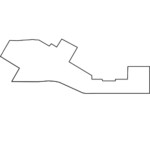
Year: 2011 – 2020
Client: Unibail-Rodamco-Westfield
Landscape Architect: Bureau Bas Smets
Architect: Cro&Co Architecture
Photographs (1, 4, 9, 10, 11): Michiel De Cleene
